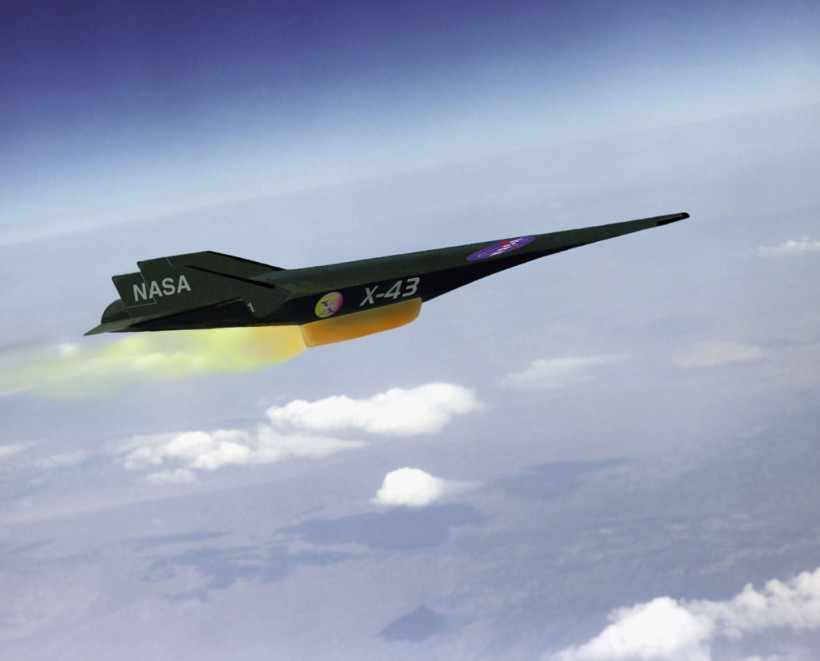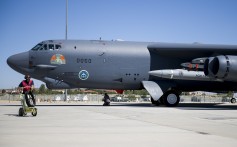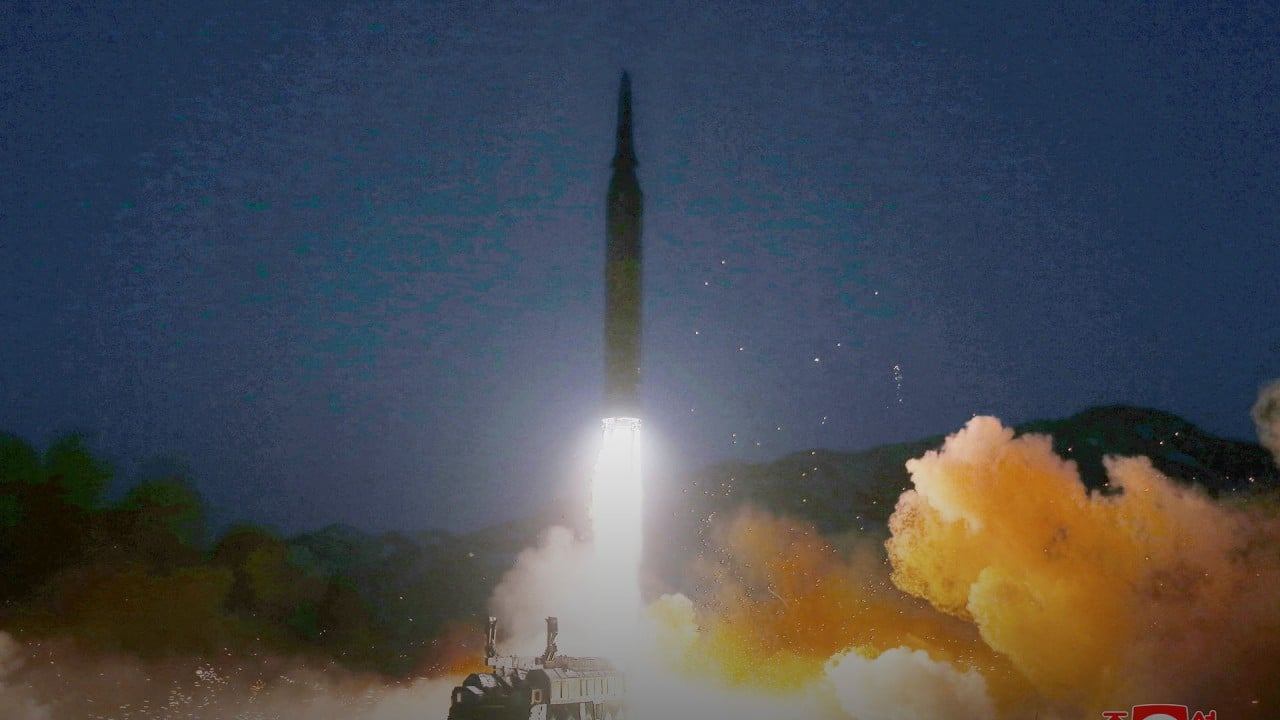
Chinese scientists question ‘flaw’ in Nasa’s hypersonic aerodynamics software | South China Morning Post
A research team in China says it has discovered a potentially fatal flaw in Nasa’s hypersonic aerodynamics software.
This
small deficiency amid tangled equations could lead to “inevitably
erroneous outcomes” when scientists simulate and analyse important
issues, such as high-temperature ablation, said the team led by
Professor Liu Jun, a researcher at the Hypersonic Technology Laboratory
of the National University of Defence Technology, in a peer-reviewed
paper published in the Chinese academic journal Acta Aerodynamica Sinica
on March 14. ResearchGate
When an aircraft’s speed exceeds Mach 5, intense friction with the air generates sizzling temperatures that can ionise air molecules and spark chemical reactions.
Chinese hypersonic weapons test ‘has all of our attention’, US General Mark Milley says
These intricate reactions can erode the surface of the aircraft and alter the temperature or density of the surrounding air. Inaccuracies in the modelling data could have profound implications for the performance and safety of the aircraft.
The software mentioned in Liu’s paper, called Vulcan-CFD, was developed by Nasa’s Langley Research Centre. Due to its potential use in the development of hypersonic weapons, it is subject to export controls with distributions limited to within American borders.
Chinese researchers gleaned their information from an academic paper published in 2020 in which the Nasa software development team introduced the working principles of Vulcan and some key equations it used.
The software was “well known” to the industry, Liu and his collaborators said.
Liu, whose laboratory is in Changsha, Hunan province, was joined in the research by scientists from the People’s Liberation Army University of Aerospace Engineering in Beijing and the Aerodynamics Research and Development Centre in Mianyang, Sichuan province. The three institutions have contributed to the rapid development of Chinese hypersonic weapon technology over the past two decades.
China at a Glance Newsletter
Your daily must-read of essential stories from China, including politics, economy and current affairs.
By submitting, you consent to receiving marketing emails from SCMP. If you don't want these, tick here
The pace of American hypersonic weapons development lags behind that of China and Russia and is gradually being overtaken by some smaller nations. North Korea says it successfully tested Mars 16B, a land-based hypersonic gliding missile, on April 3.
Meanwhile the US Army’s Long-Range Hypersonic Weapon (LRHW), which is akin to the North Korean missile, failed consecutively in 2021 and 2022. The subsequent three planned launches were either scrapped or postponed.
These setbacks come at a steep price. For the 2025 financial year alone, the US Army has requested US$1.28 billion from taxpayers “to deliver an experimental prototype with residual combat capability in 2024”.
An artist's conception of NASA's X-43A Hypersonic Experimental Vehicle, or "Hyper-X" in flight, in an undated photo. (Photo : NASA/Newsmakers)
Is US Lagging Behind Rivals in Hypersonic Tech?
The findings of Professor Liu and his colleagues' investigation on Vulcan-CFD's inner workings may reveal the US hypersonic program's delays relative to worldwide equivalents.
North Korea declared Mars 16B, a land-based hypersonic glide missile, successful on Apr. 3.
As part of its weapons program growth, North Korea is testing a solid-fuel hypersonic intermediate-range missile (IRBM). Last week, KCNA posted photos of Kim Jong Un and military officers reviewing the Hwasong-16B missile at the launch location, according to Al Jazeera. Just two weeks before, Kim oversaw an IRBM solid-fuel engine test.
The Hwasong-16B flew 1,000km (621 miles) and reached 101km (62 miles). After flying 600km (370 miles), the missile landed in the sea between South Korea and Japan, according to Seoul's military.
Kim Jong Un said the Hwasong-16B showed North Korea's "absolute superiority" in defense technologies, including nuclear-capable, solid-fuel missile systems. He pledged to increase the country's arsenal to deter Japan, South Korea, and the US. Due to their secrecy, portability, and fast deployment, North Korea prioritizes solid-fuel missiles over liquid-propelled ones, which need fueling before launch and have limited fuel storage.
Notably, the US Army's Long-Range Hypersonic Weapon failed twice in 2021 and 2022, canceling or delaying launches.
The US Congressional Budget Office says hypersonic flight's severe heat exposure is a major concern. Recently, flight testing has struggled to shield sensitive electronics, evaluate material performance, and anticipate aerodynamics at temperatures beyond 3,000 degrees Fahrenheit, per Interesting Engineering.
A strategic reevaluation may be necessary to close the gap and maintain competitiveness if the Chinese team's claims are true and Vulcan-CFD is essential to the US' hypersonic research in light of recent hypersonic developments of its rivals.
VULCAN-CFD(LAR-18512-1) | NASA Software Catalog
VULCAN-CFD offers a comprehensive set of capabilities to enable the simulation of continuum flowfields from subsonic to hypersonic conditions. The governing equations that are employed include allowances for both chemical and thermal non-equilibrium processes, coupled with a wide variety of turbulence models for both Reynolds-averaged and large eddy simulations.
The software package can simulate two-dimensional, axisymmetric, or three-dimensional problems on structured multi-block meshes or unstructured meshes. It also allows one to invoke a parabolic (i.e. space-marching) treatment for any subset of a problem that can accommodate this solution strategy. VULCAN-CFD provides a significant level of geometric flexibility for structured grid simulations by allowing for arbitrary face-to-face C(0) continuous and non-C(0) continuous block interface connectivities. The unstructured grid paradigm allows for mixed element unstructured meshes that contain any combination of tetrahedral, prismatic, pyramid, and hexahedral cell elements.
NASA/TM–2022–0008781 VULCAN-CFD User Manual: Ver. 7.2.0
Robert A. Baurle, Jeffery A. White, Matthew D. O’Connell, Tomasz G. Drozda, and Andrew T. Norris
NASA Langley Research Center, Hampton, Virginia
VULCAN-CFD offers a comprehensive set of capabilities to enable the simulation of continuum flowfields from subsonic to hypersonic conditions. The governing equations that are employed include allowances for both chemical and thermal nonequilibrium processes, coupled with a wide variety of turbulence models for both Reynolds-averaged and large eddy simulations. The software package can simulate two-dimensional, axisymmetric, or three-dimensional problems on structured multiblock meshes or fully unstructured meshes.
A parabolic (i.e., space-marching) treatment can also be used for any subset of a structured mesh that can accommodate this solution strategy. VULCAN-CFD provides a significant level of geometric flexibility for structured grid simulations by allowing for arbitrary face-to-face C(0) continuous and non-C(0) continuous block interface connectivities.
The unstructured grid paradigm allows for mixed element unstructured meshes that contain any combination of tetrahedral, prismatic, pyramidal, and hexahedral cell elements. The VULCAN-CFD flow solver is also fully parallelized using MPI (Message Passing Interface) libraries in a data-parallel fashion, allowing for efficient simulations on modern High Performance Computing (HPC) systems. This document provides information related to the installation and execution of the VULCAN-CFD software (and auxiliary tools). Detailed descriptions of the physical and numerical models available in the software are provided in the VULCAN-CFD Theory Manual.
NASA/TM–2022–0008776 VULCAN-CFD Theory Manual: Ver. 7.2.0
Robert A. Baurle, Jeffery A. White, Tomasz G. Drozda, and Andrew T. Norris
NASA Langley Research Center, Hampton, Virginia
Introduction to Theory
VULCAN-CFD offers a comprehensive set of capabilities to enable the simulation of continuum flowfields from subsonic to hypersonic conditions. The governing equations that are employed include allowances for both chemical and thermal nonequilibrium processes, coupled with a wide variety of turbulence models for both Reynolds-averaged and large eddy simulations. A description of the physical and numerical models available in the software are presented in this document.
However, it is emphasized that the descriptions provided are not intended to fully document every aspect of the models employed. Instead, the governing equations, and the models required to simulate them numerically, are presented with the goal of providing a sufficient level of detail to understand their strengths and limitations. The reader is encouraged to access the references provided throughout this document for a more complete explanation of the formulations presented.
US ‘may be sending strong message’ to China with hypersonic missile test
22 Mar 2024

US ‘may be sending strong message’ to China with hypersonic missile test
22 Mar 2024

The US Congressional Budget Office blamed the unfavourable progress on high temperatures.
“The fundamental remaining challenge involves managing the extreme heat that hypersonic missiles are exposed to by travelling at high speeds in the atmosphere for most of their flight,” the office wrote in a report after conducting a thorough investigation into American hypersonic weapon programmes last year.
“Shielding hypersonic missiles’ sensitive electronics, understanding how various materials perform, and predicting aerodynamics at sustained temperatures as high as 3,000 degrees Fahrenheit require extensive flight testing. Tests are ongoing, but failures in recent years have delayed progress,” it said.
Liu’s team said it discovered the flaw in an equation used by Nasa in Vulcan to describe changes in the concentration of different chemical components, such as oxygen and nitrogen, in high-temperature gas mixtures.
This equation fails to account for the mixing and transport of components caused by small-scale turbulence when temperatures are rapidly changing or oscillating.

02:13
North Korea claims to have conducted hypersonic missile test attended by leader Kim Jong-un
Liu’s team said in its paper that Nasa’s lack of attention to this detail has resulted in the software’s inability to precisely forecast the chemical composition and temperature changes on the aircraft surface, which could have a significant impact on simulation, design or analysis work that relies on the software.
Nasa was among the first institutions in the world to explore hypersonic technology.
The term “hypersonic” was coined by Qian Xuesen, the “father of Chinese rockets”, while he was working at Nasa as one of the three founding scientists of the Jet Propulsion Laboratory (JPL) in 1946.
Intel boss says US$7 billion loss a cost of regaining chip production supremacy
5 Apr 2024

Intel boss says US$7 billion loss a cost of regaining chip production supremacy
5 Apr 2024

Scientists and engineers at Nasa have conducted many pioneering studies and flight tests in this domain but in recent years it has suffered from persistent budget cuts and a brain drain.
JPL laid off 530 employees in February amid funding uncertainty.
The South China Morning Post has contacted Nasa for comment.


No comments:
Post a Comment